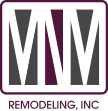Building an Accessory Dwelling Unit (ADU) can be a wise investment, providing homeowners with a source of rental income or additional living space. However, the process of building an ADU can seem daunting and overwhelming, especially for those who have never embarked on a construction project before. To help simplify the process and guide homeowners through every step, we have compiled a comprehensive guide that covers everything you need to know about building an ADU. From zoning and building codes to financing and design considerations, this guide will provide you with the information you need to make informed decisions and build the ADU of your dreams.
Is an ADU a Good Investment?
Yes, an ADU can be a good investment for homeowners looking to generate additional income or create more living space on their property. ADUs can be rented out to tenants, providing a source of passive income, or used as a separate living space for family members or guests. In addition, ADUs can increase the overall value of a property, making them a wise investment for homeowners looking to increase their net worth. However, it’s important to carefully consider the costs associated with building an ADU and ensure that it aligns with your long-term financial goals.
Different Types of ADUs
There are several types of ADUs, each with its unique benefits and considerations. The most common types of ADUs include:
Detached ADUs: These are standalone structures that are separate from the main house, usually located in the backyard or on a separate part of the property. Detached ADUs offer more privacy and flexibility in terms of design and use.
Attached ADUs: These are units that are attached to the main house, such as a basement apartment or a converted garage. Attached ADUs are typically less expensive to build and may have easier access to utilities and services.
Junior ADUs: These are small units that are attached to the main house and share a bathroom and kitchen with the main house. Junior ADUs are typically less expensive and easier to build than other types of ADUs.
Zoning and Building Codes
Before building an ADU, it’s important to understand the zoning and building codes in your area. Zoning regulations vary by city and state and may dictate where ADUs can be located their size and their design. Building codes also vary by location and may dictate the materials and methods used in construction, as well as safety and accessibility features.
Financing an ADU
There are several ways to finance an ADU, including:
Cash: If you have the funds available, paying for the ADU in cash may be the most straightforward option.
Home equity loan or line of credit: These are loans that allow you to borrow against the equity in your home, using it as collateral.
Personal loan: You may be able to take out a personal loan to finance the ADU, although interest rates may be higher than other options.
Design Considerations
When designing an ADU, it’s important to consider factors such as:
Size: The size of the ADU will depend on your needs and the available space on your property.
Layout: The layout of the ADU should be functional and efficient, with a focus on maximizing space.
Style: The style of the ADU should complement the main house and fit in with the surrounding neighborhood.
Accessibility: If you plan to rent out the ADU or have guests with mobility issues, it’s important to ensure that the unit is accessible and meets ADA requirements.
Conclusion
Building an ADU can be a complex process, but with careful planning and preparation, it can be a wise investment that provides homeowners with a source of income and added living space. By following the steps outlined in this guide, homeowners can build an ADU that meets their needs and aligns with their long-term financial goals.
If you need help with your ADU or other home remodeling work, contact MNM Remodeling. We are proud to deliver excellence in home remodeling, designs, and construction projects.


